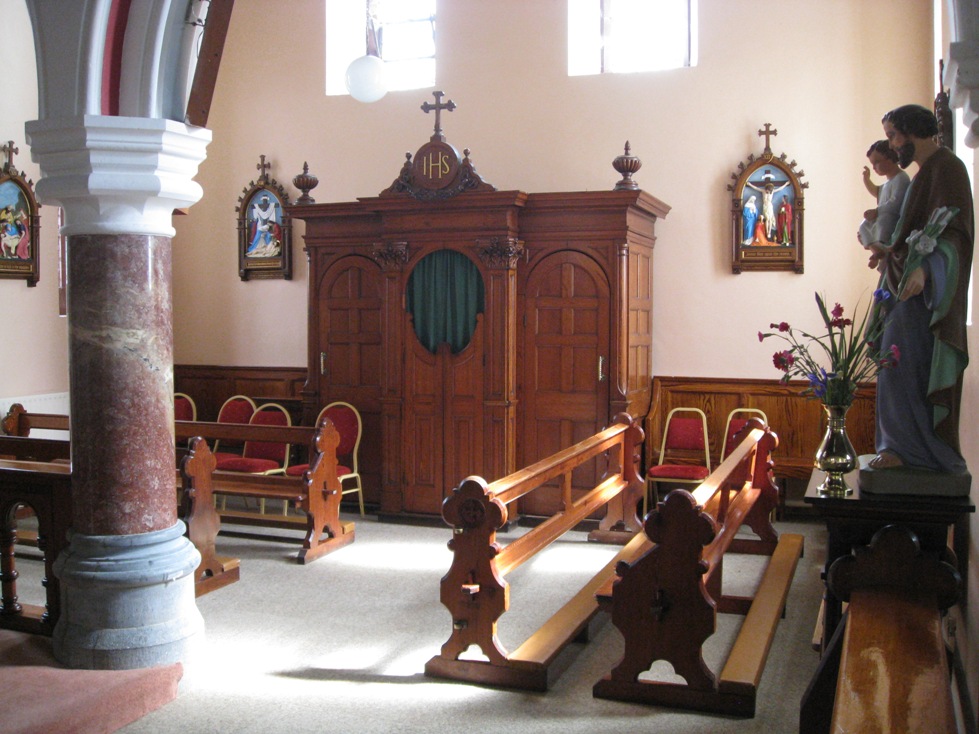The Sacraments – Reconciliation
This sacrament is also known as the sacrament of penance or confession. It is the method by which individual men and women may confess sins committed after baptism and have them absolved by a priest. A new approach to confession was introduced at the Second Vatican Council, providing other options besides the traditional way of telling sins to a priest in the confessional (see picture opposite of the confessional in Fenor church) and advising us that confession was more about becoming reconciled with God.
Catholics believe that all of the sacraments were instituted by Jesus Christ himself. In the case of reconciliation, that institution occurred on Easter Sunday, when Jesus first appeared to the apostles after his resurrection. Breathing on them he said, ‘Receive the Holy Spirit. For those whose sins you forgive, they are forgiven; for those whose sins you retain, they are retained.’ [ John 20:22-23 ].
Also, St. James, the Brother of the Lord, urged us to ‘Confess your sins to one another and pray for one another, that you may be healed.’ [ James 5:16 ]
Three things are required of a penitent in order to receive the sacrament worthily:
He/she must be contrite — in other words, sorry for his/her sins.
He/she must confess those sins fully, in kind and in number.
He/she must be willing to do penance and make amends for the sins.
Reconciliation services are held in Advent (before Christmas) and Lent (before Easter) when several priests are available to facilitate individual confession for large numbers. These services bring out the community dimension of sin and reconciliation. In some churches individual reconciliation is available on a daily basis.
Stories abound concerning the confessional box but it’s hard to beat “First Confession†by Frank O’Connor. But that was then!

